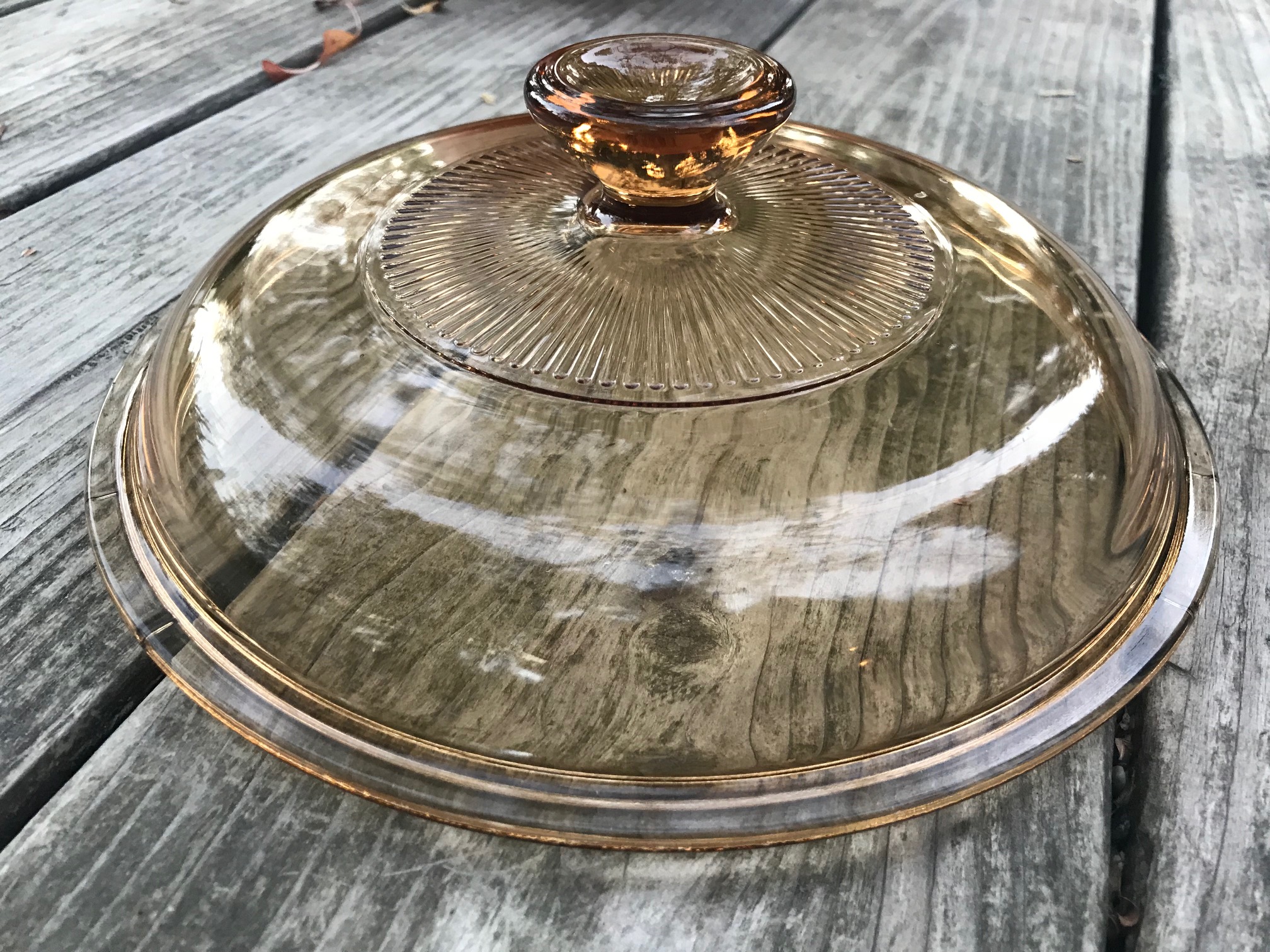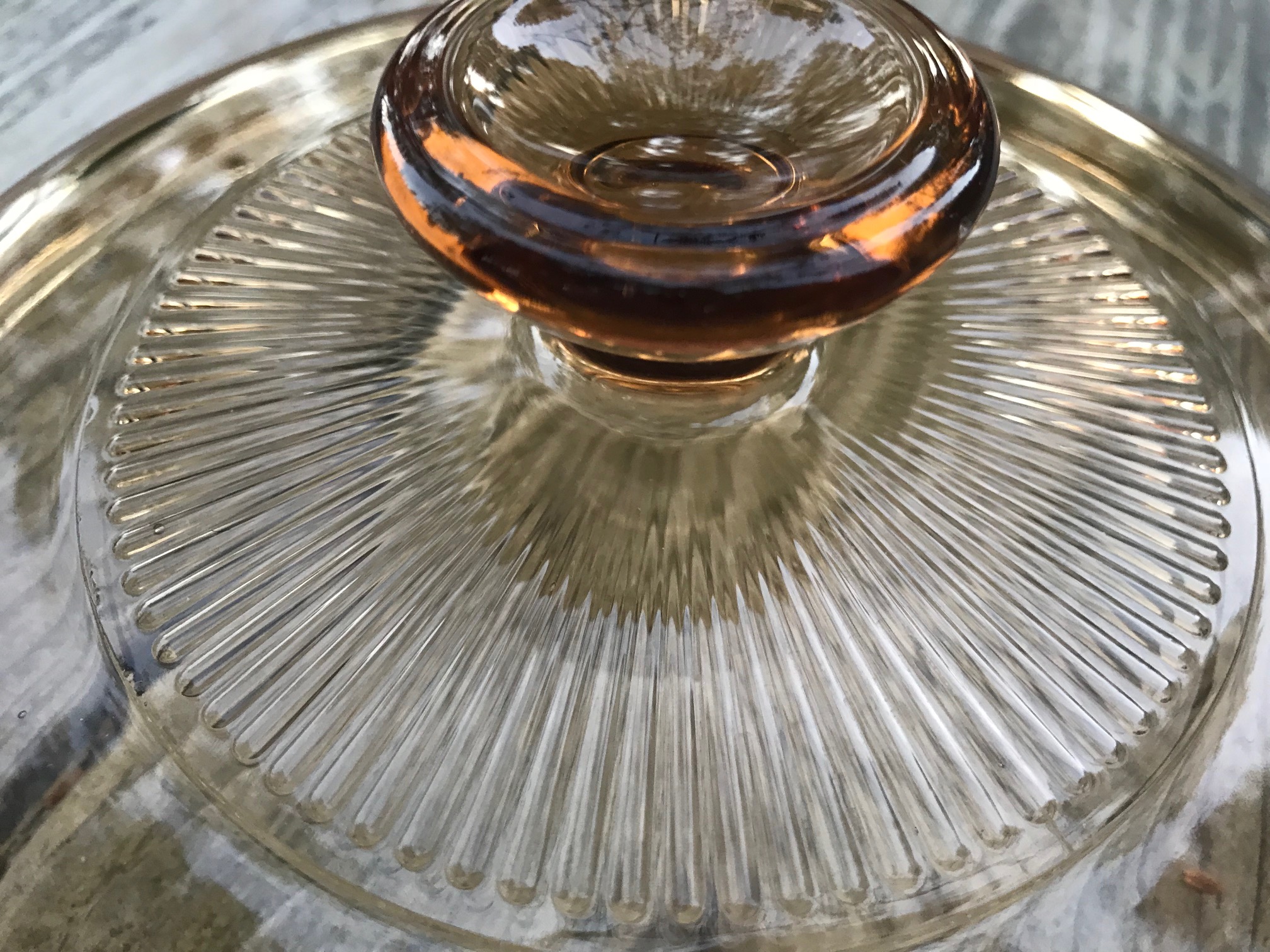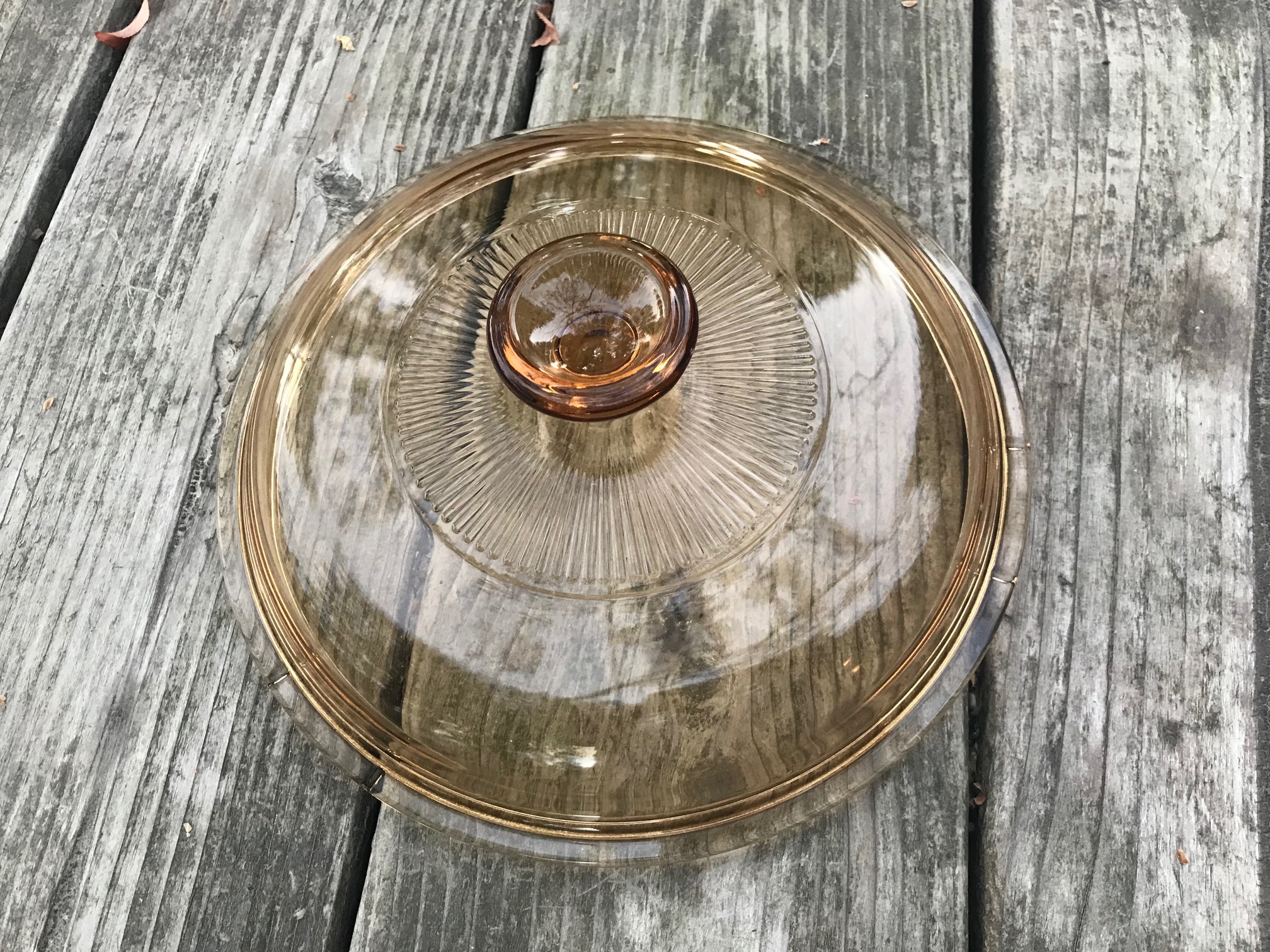Corelle/ Corning Visionware Medium Amber Lid Purchased March 2018: 222 ppm Lead, 142 ppm Barium
 Following up on my earlier posts, here is yet another example of XRF test results for a Corning Visions piece. [Year of manufacture: 2018.] I am posting a total of FOUR of these that each look very similar but are different distinct lids that were tested (in three different sizes.)
Following up on my earlier posts, here is yet another example of XRF test results for a Corning Visions piece. [Year of manufacture: 2018.] I am posting a total of FOUR of these that each look very similar but are different distinct lids that were tested (in three different sizes.)
This piece is a medium saucepan or pot lid (about 8.5 inches in diameter), with decorative radiating ridges around the center of the lid under the top-knob. There are NO brand or model markings on this piece. It was purchased new in March of 2018.
To see the exact XRF test results for this piece, please scroll down.
To learn more about XRF testing, click here.
Here’s a link to share this post on Facebook.
To see more amber glass items I have tested, click here.
Here are the XRF readings for the specific piece pictured here. These readings represent a 90-second test:
- Lead (Pb): 222 +/- 13 ppm
- Cadmium (Cd): Non-Detect*
- Arsenic (As): Non-Detect
- Mercury (Hg): Non-Detect
- Barium (Ba): 142 +/- 29 ppm
- Iron (Fe): 1,524 +/- 128 ppm
- Vanadium (V): 688 +/- 47 ppm
- Titanium (Ti): 1,081 +/- 79 ppm
- Indium (In): 14 +/- 6 ppm
- Manganese (Mn): 2,635 +/- 216 ppm
*Non-Detect = negative within the testing limitations of an XRF instrument.
To see more Visionware pieces I have tested, click here.
While this particular piece of Visionware was positive for (low levels of) lead, some of the Visions pieces I have tested over the years have also been completely lead-free (“Non-Detect” when tested with an XRF instrument.)
In the absence of any reliable method for the consumer to be able to distinguish between potentially leaded and potentially lead-free items, I personally do not use Corning/Corelle Visionware for my family, nor do I recommend this line of products at this point. Instead, I choose undecorated clear glass (new Pyrex is generally good), quality stainless steel, or (un-enameled / undecorated) cast iron for cooking.
That said, just because a piece is positive for lead using XRF technology does not mean the lead is necessarily leaching into your food (now or in the future), however because lead-free options are available I always make lead-free choices for my family.
To see products I recommend that are the same as or
similar to items I use for my family, click here.
Thank you for taking the time to read this article and for sharing it with others!
As always, please let me know if you have any questions! [Most questions you might have related to Corning Visions are answered on this piece here.]
Tamara Rubin
#LeadSafeMama
Never Miss an Important Article Again!
Join our Email List





The Vision lids that you have tested are made from a PYREX type of glass and over the years different formulas have been used – Borosilicate glass and more recently Soda-Lime glass. Where as the actual Vision product has been made from a Pyroceram type glass whose formula has changed very little of the years. I am suprised that you found lead in the Pyrex lids (used on some Vison products) and no lead in an actual piece of Pyrex (clear or otherwise) when the material is essentially the same.
Several of these lids are also brand new from the factory this year. I believe the lead is likely from the colorant, as that is typical of most colorants (that colorants are often positive for trace toxicants.) In the lead-free pieces barium appears to be the colorant, but the ones that are positive for trace lead have much less (or no) barium – so something else is being used to generate the same amber color. Thanks for commenting, Rodney.
I did notice the lids were not made in France, which essentially suggests that Corningware cut corners on the lids. I would not be surprised if they cut corners on the formula for the lids since it’s not the part in direct contact with open fire.
Yeah – I noticed that too.
That said the Lead levels are low, but it is disappointing to see ANY Lead in a newly manufactured product intended for food-use purposes.
Tamara
Hi Tamara,
I just found another company who also does cast iron products. For those who cook/use them, check out Stargazer cast irons quality! They claim to be 100 iron and use NON GMO oils for seasoning. Do you know anything about them?
Thanks!
Hi Tamara,
it seems like the issue with Visions cookware is mostly with the lids. I found some alternative clear glass lids from Corningware that may fit certain Visions: https://www.corningware.com/product/stovetop-25l-round-glass-lid, what is your opinion about these? Thanks.
Best regards,
Jon C.
Hi Jon,
Yes – I agree 100% and that’s a terrific simple solution. I would expect their clear-glass modern products to be lead-free (although I have not tested any personally recently.)
Tamara
Hi, thank you for doing all this testing! Have you tested the vision pots at all? The lids and the pots are made in different places so it would be interesting to see the results for the pots.
hi Kristin!
Yes – I have. Here is the category link for those posts: https://tamararubin.com/category/corning-visionware/
Tamara
Thank you! I also saw a post about the Staub kettle on your site a while ago but can’t find it now. Do you recommend Staub products? I have a few vision pans, le creuset, ikea stainless steel and a staub pot.. I am wondering whether I should get rid of some of them (which I previously believed to be safer options)
Do you think typical modern clear glass lids (with no paint)for pots and pans purchased from Amazon will be lead-free? The handles typically are either stainless steel or plastic.